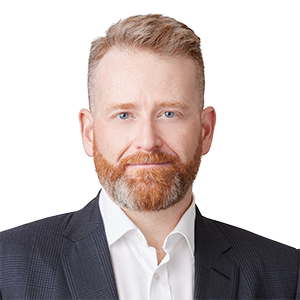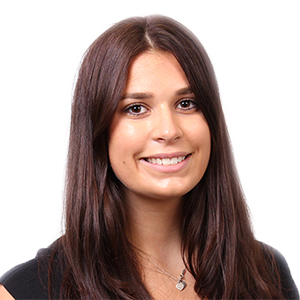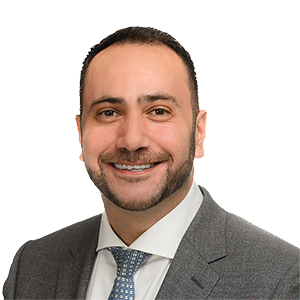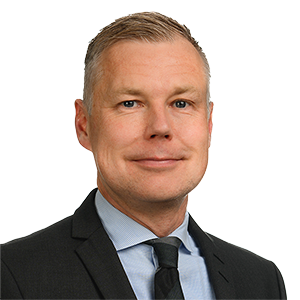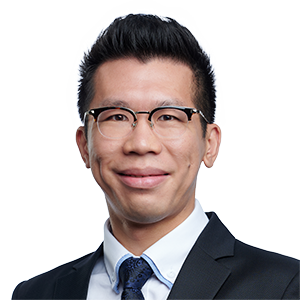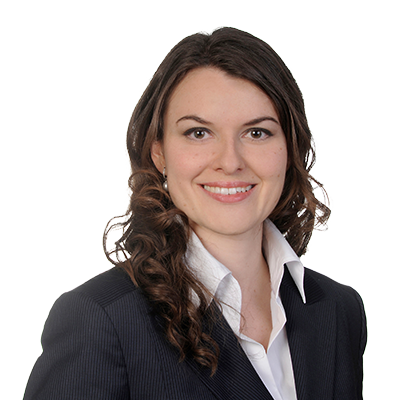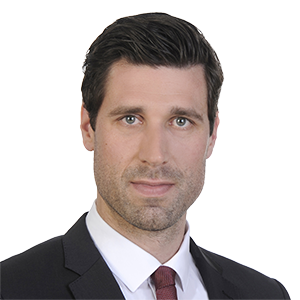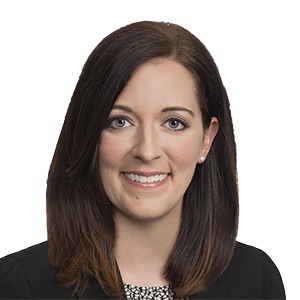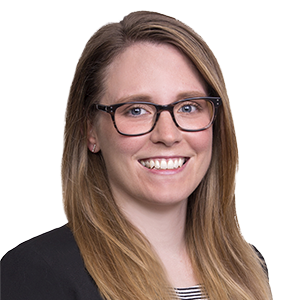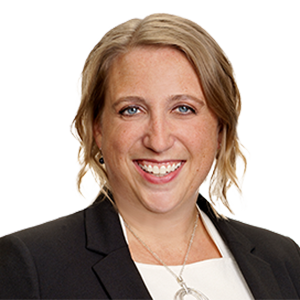Worldwide, a basic requirement for a valid patent is that it provide a sufficient disclosure of the invention being claimed. Sufficient disclosure seems to be having a moment: in recent years, high-stakes patent litigation in a number of jurisdictions has turned on the issue. For example, since 2020, insufficient disclosure led the U.K. Supreme Court to invalidate claims to transgenic mice (Regeneron) and the U.S. Court of Appeals for the Federal Circuit to invalidate claims to antibodies (Amgen) and to chimeric antigen receptors (Juno). The Juno decision reversed a US$1.2B damages award.
Stepping back, a patent provides a legal right to a time-limited monopoly over an invention. But to be valid, the patent – and more precisely, the patent’s specification - must disclose to the public information about the invention. The question is how much information is sufficient? Typically, to provide sufficient disclosure, the patent specification must at least teach a skilled person how to successfully work the invention. Such an “enabling disclosure” ensures that the invention can be put to use by the public after the patent expires.
Here, we provide a high-level guide to the law of sufficient disclosure in Australia, Canada, the People’s Republic of China, Europe (under the European Patent Convention), Germany, Turkey, the United Kingdom, and the United States of America. The guide starts with a table summarizing key points of law across the jurisdictions, followed by a brief analysis of each jurisdiction. There are some interesting trends. For instance, all of the jurisdictions do require that a patent provide an enabling disclosure, but they all allow some amount of experimentation by a skilled person to make the invention work. By contrast, the jurisdictions are not consistent on whether an invention must be enabled across the entire breadth of a claim and on whether the “best mode” of an invention needs to be disclosed in the specification.
| |
Australia
(Pre-RTB)
|
Australia
(Post-RTB) |
Canada |
China |
EPC |
Germany |
Turkey |
United Kingdom |
United States |
| Does the law require that a patent provide an enabling disclosure? |
Y
|
Y |
Y |
Y |
Y |
Y |
Y |
Y |
Y |
| Can a disclosure be enabling (or otherwise sufficient) if experiments are required to practice the invention? |
Y |
Y |
Y |
Y |
Y |
Y |
Y |
Y |
Y |
| Does a claim need to be enabled across its entire breadth? |
N |
Y |
U |
Y |
Y |
U |
Y |
Y |
Y |
| Does the “best mode” of an invention need to be disclosed? |
Y |
Y |
U |
N |
N |
N |
U |
N |
Y |
| Does the law distinguish between structural and functional claim elements? |
N |
U |
U |
Y/N |
N |
N |
N |
N |
Y |
Answers: Y: Yes; N: No; Y/N: Yes and No; U: Unclear (full answers below)
Select a region to read more:
Australia > Canada > China >
European Patent Convention (EPC) and Germany (DE)
Turkey > UK > US >
| Authors |
Jackie O’Brien, Daniel Posker, Isobel Taylor (Sydney) |
| |
Pre-RTB
|
Post-RTB |
| Australia’s patent disclosure rules changed in 2013 when the Raising the Bar (RTB) amendments came into force. Patents for which a request for examination was made on or after April 15, 2013 are assessed according to the post-RTB requirements. Patents for which a request for examination was made before April 15, 2013 continue to be assessed according to pre-RTB requirements. |
|
What are the statutory requirements for patent disclosure?
|
Section 40(2) of the Australian Patents Act (pre-RTB) requires, relevantly, that a complete specification must (emphasis added):
(a) describe the invention fully, including the best method known to the applicant of performing the invention;
|
Section 40(2) of the Australian Patents Act (post-RTB) requires, relevantly, that a complete specification must (emphasis added):
a) disclose the invention in a manner which is clear enough and complete enough for the invention to be performed by a person skilled in the relevant art; and
(aa) disclose the best method known to the applicant of performing the invention;
|
|
Does the law require that a patent provide an enabling disclosure?
|
Yes.
Although the concept of “enabling disclosure” is not specifically referred to in the text of the legislation (unlike in other jurisdictions), it has been interpreted in this manner. The test has been expressed in the following terms by the High Court (emphasis added):
will the disclosure enable the addressee of the specification to produce something within each claim without new inventions or additions or prolonged study of matters presenting initial difficulty?
|
Likely.
The post-RTB statutory provision again makes no reference to enablement or an enabling disclosure and there has, as yet, been no definitive judicial consideration of this point in the post-RTB context. Having said that, the stated purpose of the amendment was to require that:
sufficient information…be provided to enable the whole width of the claimed invention to be performed by the skilled person without undue burden, or the need for further invention.
The RTB amendments were intended to align Australia’s disclosure requirements with that applying in other major jurisdictions such as the UK and EU. It remains to be seen how Australian courts will implement this intention while at the same time dealing with potentially uncertain aspects of some foreign jurisprudence, including the apparent intermingling of the requirements of sufficiency and support (which remain separate requirements under the post-RTB Patents Act).
|
|
What is the relevant date for determining if a patent’s disclosure is enabling (or otherwise sufficient)?
|
Filing date.
However, if the sufficiency requirements are not met, they may be rectified at any time up until grant, subject only to compliance with the requirements for the allowability of amendments.
|
Filing date.
An insufficient disclosure cannot be rectified by adding new matter after the filing date of the application.
|
|
Can a disclosure be enabling (or otherwise sufficient) if experiments are required to practice the invention?
|
Possibly.
In some cases, disclosure may be considered sufficient if only experiments of a standard or routine character or in the nature of ordinary steps of trial and error, which are obvious to, and within the competence of the person skilled in the art, are required.
However, a disclosure may not be sufficient if the experimentation requires new inventions or prolonged matters of study presenting initial difficulty, or even if the next steps are clear and routine but the person skilled in the art needs to apply considerable skill, effort and resources to make it work.
The extent of disclosure required to satisfy the test for sufficiency will depend upon the nature of the invention, the character of the technical field, and the abilities of the person skilled in the art.
|
Possibly.
The same broad considerations apply to the post-RTB section. That is, the disclosure may be considered sufficient if the whole width of the claims (as discussed further below) can be performed by a person skilled in the art without undue burden or the need for further invention.
|
|
Does a claim need to be enabled across its entire breadth?
|
No.
All that is required is that the patent specification contain a description of an example within the scope of each claim (even if multiple examples or embodiments of the invention may be claimed) that is sufficient to enable the skilled addressee to utilise the invention.
|
Yes.
The RTB amendments were specifically intended to require enablement across the full width of the claims and it is generally accepted that the post-RTB provision achieves this.
The intended effect of the post-RTB provision is that where the claims in a specification are broad, the specification will most likely need to provide a number of examples or describe alternative embodiments or variations extending across the full scope of the claims, such that the monopoly extends only to that which could reasonably be said to be disclosed, and no further. |
|
Does the “best mode” of an invention need to be disclosed?
|
Yes.
Section 40(2)(a) expressly requires that, in addition to describing the invention fully, the complete specification must also “includ[e] the best method known to the applicant performing the invention”.
The best method requirement is in addition to, and is assessed separately from, the sufficiency requirement.
|
Yes.
Section 40(2)(aa) expressly requires that the complete specification must “disclose the best method known to the applicant of performing the invention”. Again, this is assessed separately from the question of sufficiency. Any previous doubt concerning whether the best method requirement was a distinct statutory requirement has been removed by placing the best method requirement in its own separate sub-paragraph.
|
|
Does the law distinguish between structural and functional claim elements with respect to sufficiency of disclosure?
|
No.
There is authority for the proposition that functional claims (limited by reference to a result) do not need to be treated differently from other claims for the purposes of sufficiency – the relevant tests for sufficiency (as outlined above) will be applied in the same way to determine whether the specification provides enough information for the person skilled in the art, equipped with the common general knowledge, to obtain the specified result.
Therefore, if a claim covers a large number of variants defined in functional terms, it appears that the sufficiency of the specification would still depend on whether it would be a matter of routine to evaluate all possible variants to identify those possessing the requisite function.
|
No.
See explanation for pre-RTB.
|
|
Other comments on sufficiency of disclosure specific to jurisdiction.
|
|
The RTB amendments were specifically adopted to better align Australia’s sufficiency requirements with the more stringent requirements under UK and EU law and that of Australia’s other major trading partners.Legal authorities concerning the test for sufficiency in these jurisdictions will therefore be of greater relevance to the development of Australian jurisprudence on this issue than had previously been the case. |
| Authors |
Daniel Daniele, Paul Jorgensen (Toronto) |
|
What are the statutory requirements for patent disclosure?
|
Section 27(3) of the Canadian Patent Act requires that a specification:
(a) correctly and fully describe the invention and its operation or use as contemplated by the inventor;
(b) set out clearly the various steps in a process, or the method of constructing, making, compounding or using a machine, manufacture or composition of matter, in such full, clear, concise and exact terms as to enable any person skilled in the art or science to which it pertains, or with which it is most closely connected, to make, construct, compound or use it.
Section 27(3) also has provisions specific to the disclosure of inventions that are machines or processes.
|
|
Does the law require that a patent provide an enabling disclosure?
|
Yes.
The Canadian Patent Act has a statutory enablement requirement (s. 27(3) above). This requirement has been interpreted by the Federal Court of Appeal as follows:
an enabling disclosure is one that gives enough information to the [person of skill in the art] armed with his or her common general knowledge to practice the invention. |
|
What is the relevant date for determining if a patent’s disclosure is enabling (or otherwise sufficient)?
|
Unclear.
The Federal Courts have held that both the filing dateand the publication date are the relevant date for determining sufficiency of disclosure.
|
|
Can a disclosure be enabling (or otherwise sufficient) if experiments are required to practice the invention?
|
Yes.
A disclosure can be enabling even if some experiments are required to practice the invention. However, the experimentation cannot involve an inventive step, chance, or undue efforts. The acceptable amount of effort depends on the nature of the invention and the field to which it pertains.
|
|
Does a claim need to be enabled across its entire breadth?
|
Unclear.
The Federal Court of Appeal recently suggested that a claim must be enabled across its breadth, writing:
[I]t is not enough for the disclosure to teach how to make the preferred embodiment. The disclosure must teach the skilled person to put into practice all embodiments of the invention, and without exercising inventive ingenuity or undue experimentation.
However, it is unclear if this finding is consistent with earlier findings from the same Court. |
|
Does the “best mode” of an invention need to be disclosed?
|
Unclear.
For an invention that is “a machine”, the “best mode” must be disclosed. The Patent Act, in s. 27(3)(c), requires the specification to:
explain the principle of the machine and the best mode in which the inventor has contemplated the application of that principle;…
For other types of invention, it is unclear if there is a “best mode” requirement. The Federal Court of Appeal recently stated:
there is considerable doubt as to whether… the best-mode requirement is limited to machines. |
|
Does the law distinguish between structural and functional claim elements with respect to sufficiency of disclosure?
|
Unclear.
Canadian courts have made few direct comments on how functional claiming affects sufficiency of disclosure. However, in recent years, the Federal Court has: (i) confirmed that functional claiming is acceptable in principle, and (ii) upheld claims with functional limitations against insufficiency attacks.
|
| Authors |
Justin Davidson, Stanley Ng (Hong Kong SAR) |
| What are the statutory requirements for patent disclosure? |
Article 26.3 of the PRC Patent Law requires that the specification clearly and fully describe the invention so as to enable a person skilled in the art to practice it.
|
| Does the law require that a patent provide an enabling disclosure?
|
Yes.
This requirement is stated in Article 26.3 of the PRC Patent Law (please see above) and also in the PRC Patent Examination Guidelines, which provide that the specification shall:
i) clearly disclose the technical solution of the invention;
ii) describe in detail the embodiments for practicing the invention; and
iii) completely disclose any necessary technical information for understanding and practicing the invention
to such extent that a skill person is enabled to practice the invention.
|
| What is the relevant date for determining if a patent’s disclosure is enabling (or otherwise sufficient)? |
Unclear.
The Supreme People’s Court referred to the filing date for determination of sufficiency and enablement in a judicial interpretation, but under the Patent Examination Guidelines the relevant test is applied in the context of the notional skilled person in the art, who is aware of the general knowledge in the field and possesses conventional experimental skills as of the application date or priority date (if priority is claimed).
|
| Can a disclosure be enabling (or otherwise sufficient) if experiments are required to practice the invention? |
Yes.
A disclosure can be enabling if experimentation is required provided that the invention is in a predictable field and the experimentation does not require creative labour. Generally, for mechanical inventions, it may be possible to argue that a skilled person can easily arrive at the full breadth of the claim by conventional experimentation, especially if the specification provides clear and sufficient disclosure on the relevant technical aspects. However, for unpredictable arts such as chemistry and biology related inventions, experimental data is almost inevitably required in practice, e.g. to show the efficacy of a new drug.
|
| Does a claim need to be enabled across its entire breadth? |
Yes.
Per the Patent Examination Guidelines, the technical solutions in the claims either shall be (i) directly disclosed in the specification or (ii) a generalization of the specification’s disclosure (e.g. generalization of the specific embodiments or examples). Regarding the scope of generalization, the Patent Examination Guidelines provides the following explanation:
If the person skilled in the art can reasonably predict that all the equivalents or obvious variants of the embodiments set forth in the description have the same properties or uses, then the applicant shall be allowed to generalize the scope of the claim to cover all the equivalents or obvious variants.
In other words, if the technical feature in a claim:
a) is not an equivalent or obvious variant of the embodiments and is not disclosed elsewhere in the specification; or
b) is an equivalent or obvious variant of the embodiments but does not have the same property or use as in the embodiment,
then the technical feature may not be supported by the specification.
Also, if certain features in the claim are merely the applicant’s speculation and the effect of which is difficult to determine or evaluate without undue experimentation, the claim would also be deemed as lacking support. |
| Does the “best mode” of an invention need to be disclosed? |
No.
There is no requirement to disclose the “best mode” when applying for a PRC patent.
|
| Does the law distinguish between structural and functional claim elements with respect to sufficiency of disclosure? |
Yes and No.
The PRC Patent Law and its Implementation Regulations do not distinguish between structural and functional claim features. The Patent Examination Guidelines, however, provides that, for a product claim, functional languages should be avoided unless:
(i) the feature can only be defined by functional means or a definition by functional means is more appropriate than by structure; and
(ii) the function or effect can be directly and affirmatively verified by experiments disclosed in the specification or by customary means in the art.
If the claimed function is accomplished in a specific way under the embodiment, and the skilled person:
(i) would not contemplate that the function can be achieved by another means not disclosed in the specification; or
(ii) would have reasonable doubt as to whether one or more means encompassed by the functional element can solve the technical problem and attain the same technical effect,
then the functional language would be rejected as lacking support. |
| Authors |
Clemens Rübel, Tiffany Zilliox, Maximilian Schmitz (Munich) |
|
What are the statutory requirements for patent disclosure?
|
Section 34 para. 4 of the German Patent Act (PatG) and Article 83 of the European Patent Convention (EPC) require that a German or European patent application disclose the invention in a manner sufficiently clear and complete for it to be carried out by a person skilled in the art.
If the patent application or the patent does not do so, the consequence can be rejection of the patent application, or revocation or nullification of the patent according to Sec. 21 para. 1 no. 2, Sec. 22 para. 1 German Patent Act or Art. 100 lit.b, Art. 138 para. 1 lit.b EPC. |
|
Does the law require that a patent provide an enabling disclosure?
|
Yes.
It is required that the skilled person can derive from the patent/patent application at least one way to carry out the invention.
However, it is not required that the patent repeats general expert knowledge for the skilled person. The skilled person can complete missing information with his/her expert knowledge.
The EPO Board of Appeal also states that examples are not mandatory in every case.
|
|
What is the relevant date for determining if a patent’s disclosure is enabling (or otherwise sufficient)?
|
Application or priority date.
DE: Although the German Patent Act is unclear in this regard, the Federal Supreme Court determines the relevant date for sufficiency of disclosure as the application or priority date of the patent.
EP: The Enlarged Board of Appeal of the EPO also determines the relevant point in time as the application or priority date of the patent.
|
|
Can a disclosure be enabling (or otherwise sufficient) if experiments are required to practice the invention?
|
Yes.
In cases where the invention is not sufficiently disclosed, performance of experimentation by the skilled person can overcome this deficiency. However, the experimentation must not exceed a usual dimension or be an undue burden.The skilled person needs a reason that suggests that the experiments should be performed. Experimentation has to be reasonable for the skilled person and needs to provide rapid results. Additionally, the experimentation cannot require an inventive step of the skilled person.
|
|
Does a claim need to be enabled across its entire breadth?
|
DE: Unclear.
German case law does generally not require enabling across the entire breadth of the patent claim. It is considered sufficient that at least one way of the invention is disclosed which enables the skilled person to carry out the invention. However, the Federal Supreme Court exceptionally requires enablement across its entire breadth in cases where the subject matter of the invention is defined by a specific range.
EP: Yes.
The permanent case law of the EPO requires the invention to be enabled across its entire breadth.
|
|
Does the “best mode” of an invention need to be disclosed?
|
No.
Neither the EPCnor the German Patent Actrequire disclosure of a best mode of the invention.
|
|
Does the law distinguish between structural and functional claim elements with respect to sufficiency of disclosure?
|
No.
In principle the statutory provisions and the German Courts or the EPO do not distinguish between structural and functional claim elements with respect to sufficiency of disclosure.
Functional claim elements for product claims (“means-plus-function claim”) or method claims (“step-plus-function claims”) are admissible under the German Patent Act and the EPC under certain conditions.
Functional features may be used to disclose an invention (for example a substance or substance mixture), if the invention cannot be described more precisely in objective terms without undue restriction and can be carried out by the person skilled in the art in a reasonable manner. This requires that the functional feature is suitable to unambiguously define the subject matter for the person skilled in the art.
Whether this is the case depends on the individual circumstances. However, it seems that EPO and the German Courts apply the rule differently: On the basis of the same facts, the EPO Board of Appeal withdrew a patent because the functional element was not considered to be sufficiently disclosed, while the German Federal Supreme Court was less strict and confirmed sufficiency of disclosure.
|
| Authors |
S. Asli Kucuroglu Alkan, Partner, Pekin Bayar Mizrahi
|
|
What are the statutory requirements for patent disclosure?
|
Article 92 of the Turkish Industrial Property Law No.6769 (“Law No. 6769”) requires that the invention shall be explained by a person who is skilled in the art which is related to the subject of the invention, in a very clear and complete way that can provide the invention with practicality using the drawings that are in the patent application, description and claims or are referred in the description or claims. The consequence of failing to meet this requirement can be rejection of the patent application, or revocation or nullification of the patent.
If the invention is related to a biological material, which cannot be reached by the public and cannot be defined by the person skilled in the art, and which is not specified in the patent application sufficiently enough to make the invention understandable to be applied, or if the invention includes the use of this material, depositing a sample of the material will be deemed sufficient disclosure.
|
|
Does the law require that a patent provide an enabling disclosure?
|
Yes.
Even though “enabling disclosure” is not specifically referred to in the text of Law No. 6769, it is required that the skilled person can determine from the patent/patent application how to carry out the invention. The description must be written clearly and in detail, in such a way as to enable the invention to be practiced by a person who is an expert in the technical field to which the subject of the invention is related. All features of the invention must be explained in full, without hiding anything.
|
|
What is the relevant date for determining if a patent’s disclosure is enabling (or otherwise sufficient)?
|
Unclear.
|
|
Can a disclosure be enabling (or otherwise sufficient) if experiments are required to practice the invention?
|
Yes.
The extent of disclosure required to satisfy the test for sufficiency will depend upon the nature of the invention, the character of the technical field, and the abilities of the person skilled in the art.
|
|
Does a claim need to be enabled across its entire breadth?
|
Yes.
The underlying rule is that the extent of the protection provided by the patent application or the patent itself shall be determined by claims and so the entire breadth of the claims must be enabled by the patent.
|
|
Does the “best mode” of an invention need to be disclosed?
|
Unclear.
Even though “best mode” is not specifically referred to in the text of Law No. 6769, the extent of the protection provided by the patent shall be determined by the published claims. Therefore, it is important to claim and disclose the best mode of an invention.
|
|
Does the law distinguish between structural and functional claim elements with respect to sufficiency of disclosure?
|
No.
In principle, Law No. 6769 does not distinguish between structural and functional claim elements with respect to sufficiency of disclosure.
|
| Other comments on sufficiency of disclosure specific to jurisdiction. |
As per Article 124 of Law No. 6769, if the Turkish Patent and Trademark Authority (“TPTA”) is of the opinion that the invention matters to national security, it sends a copy of the application to the Ministry of National Defense in order to receive the Ministry’s opinion and notifies the applicant of the situation. If the Ministry of National Defense decides that the application process should be conducted in secret, it notifies the TPTA. The TPTA then notifies the applicant that the patent application is subject to confidentiality and registers the application as a classified patent application. The patent applicant is not allowed to disclose an invention that is the subject of a classified patent application to any unauthorized parties. |
UK
| Authors |
Paul Joseph, Jamie Brazier (London) |
| What are the statutory requirements for patent disclosure? |
Article 83 of the European Patent Convention states that an application must disclose the invention in a manner sufficiently clear and complete for it to be carried out by a person skilled in the art.
If the enabling disclosure is insufficient, the patent may be revoked under s72(c) Patents Act 1977. |
| Does the law require that a patent provide an enabling disclosure? |
Yes.
Article 83 of the European Patent Convention states that an application must disclose the invention in a manner sufficiently clear and complete for it to be carried out by a person skilled in the art.
The ordinary skilled person must be able to perform the invention which satisfies the requirement of disclosure. The House of Lords has held that the test for enablement of a prior disclosure for the purpose of anticipation is the same as the test of enablement of the patent itself for the purpose of sufficiency.
If the enabling disclosure is insufficient, the patent may be revoked under s72(c) Patents Act 1977.
|
| What is the relevant date for determining if a patent’s disclosure is enabling (or otherwise sufficient)? |
Unclear.
In the UK, there is no clear authority as to the date from which the claims of the patent are to be construed, although the leading contender is the date of publication of the granted patent.
In the UK, different dates may be relevant for obviousness (priority date), sufficiency (filing date) and construction (publication), which whilst inconvenient, merely reflect underlying policies. In most cases, this is unlikely to make a material difference in a case, as parties ordinarily lead evidence of the common general knowledge as of the priority date.
|
| Can a disclosure be enabling (or otherwise sufficient) if experiments are required to practice the invention? |
Yes.
There is a distinction between disclosure and enablement to avoid any confusion that may arise if the skilled addressee of the prior art may need to carry out trial and error experimentation to put such art into practice. It is necessary to consider whether or not such experimentation is merely part of the exercise of enabling him or her to apply what has already been disclosed, or whether it amounts to finding out something more.
For enablement, the person skilled in the art is assumed to be willing to make trial and error experiments to get it to work, and the question is not what the skilled person would think the disclosure meant, but rather whether they would be able to work the disclosed invention. |
| Does a claim need to be enabled across its entire breadth? |
Yes.
If a claim extends beyond the technical contribution it will not support the invention and will be insufficient. The underlying rule is that the patentee cannot claim more than it has enabled in its disclosure, as has been recently confirmed by the Supreme Court.
|
| Does the “best mode” of an invention need to be disclosed? |
No.
There is no “best mode” requirement under UK law.
|
| Does the law distinguish between structural and functional claim elements with respect to sufficiency of disclosure? |
No.
Where a claim has structural and functional limitations, it is necessary that all the compounds with the structural features of the claims are suitable for use.
|
| Authors |
Stephanie DeBrow (New York), Tamsen Barrett (Austin), Sarah Eddy (Austin) |
| What are the statutory requirements for patent disclosure? |
35 U.S.C. § 112(a) of the America Invents Act (AIA) states:
The specification shall contain a written description of the invention, and of the manner and process of making and using it, in such full, clear, concise, and exact terms as to enable any person skilled in the art to which it pertains, or with which it is most nearly connected, to make and use the same, and shall set forth the best mode contemplated by the inventor or joint inventor of carrying out the invention. |
| Does the law require that a patent provide an enabling disclosure? |
Yes.
35 U.S.C. § 112(a) of the AIA requires disclosures to be sufficient to inform those skilled in the relevant art how to both make and use the claimed invention. However, it is not necessary to “enable one of ordinary skill in the art to make and use a perfected, commercially viable embodiment absent a claim limitation to that effect.”
|
What is the relevant date for determining if a patent’s disclosure is enabling (or otherwise sufficient)?
|
The Filing Date.
The state of the art existing at the filing date of the application is used to determine whether a particular disclosure is enabling as of the filing date.
|
| Can a disclosure be enabling (or otherwise sufficient) if experiments are required to practice the invention? |
Yes.
A disclosure can be enabling even if some experiments are required to practice the invention, and applicants are permitted to provide declarations after the filing date that demonstrate that the claimed invention works.However, experimentation must be commensurate in scope; i.e., that the experiments used the guidance in the specification as filed and what was well known to one of skill in the art at the time of filing.Such a showing also must be commensurate with the scope of the claimed invention, i.e., must reasonably enable the full scope of the claimed invention.
|
| Does a claim need to be enabled across its entire breadth? |
Yes.
A conclusion of lack of enablement means that the specification, at the time the application was filed, would not have taught one skilled in the art how to make and/or use the full scope of the claimed invention without undue experimentation.
|
| Does the “best mode” of an invention need to be disclosed? |
Yes.
35 U.S.C. § 112(a) of the AIA requires disclosures to set forth the best mode contemplated by the inventor or joint inventor of carrying out the invention. The specificity of disclosure required to comply with the best mode requirement must be determined by the knowledge of facts within the possession of the inventor at the time of filing the application. However, failure to disclose the best mode shall not be a basis on which any claim of a patent may be canceled or held invalid or otherwise unenforceable.
|
| Does the law distinguish between structural and functional claim elements with respect to sufficiency of disclosure? |
Yes.
Functional claim terms recite a feature “by what it does rather than by what it is” (e.g., as evidenced by its specific structure or specific ingredients), and functional limitations are evaluated and considered, just like any other limitation of a claim, for what they fairly convey to a person of ordinary skill in the art in the context in which they are used.
|
| Other comments on sufficiency of disclosure specific to jurisdiction. |
35 U.S.C. § 112(a) of the AIA also requires disclosures to contain a written description of the invention. The written description requirement is separate and distinct from the enablement requirement, and the purpose of the written description requirement is broader than to merely explain how to make and use the claimed invention. Therefore, a claim limitation lacking descriptive support in the disclosure as originally filed does not necessarily mean that the limitation is also not enabled, provided that one skilled in the art could make and use the claimed invention with the limitation. Consequently, such limitations must be analyzed for both enablement and description using their separate and distinct criteria.
To satisfy the written description requirement, a patent specification must describe the claimed invention in sufficient detail that one skilled in the art can reasonably conclude that the inventor had possession of the claimed invention.An applicant shows possession of the claimed invention by including description of an actual reduction to practice or by showing the invention was ready for patenting by describing the claimed invention with all of its limitations using such descriptive means as words, structures, figures, diagrams, and formulas that fully set forth the claimed invention.
|



